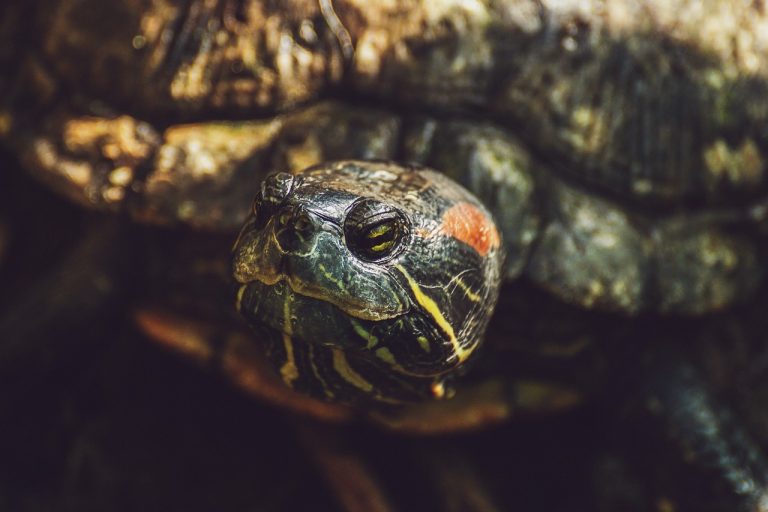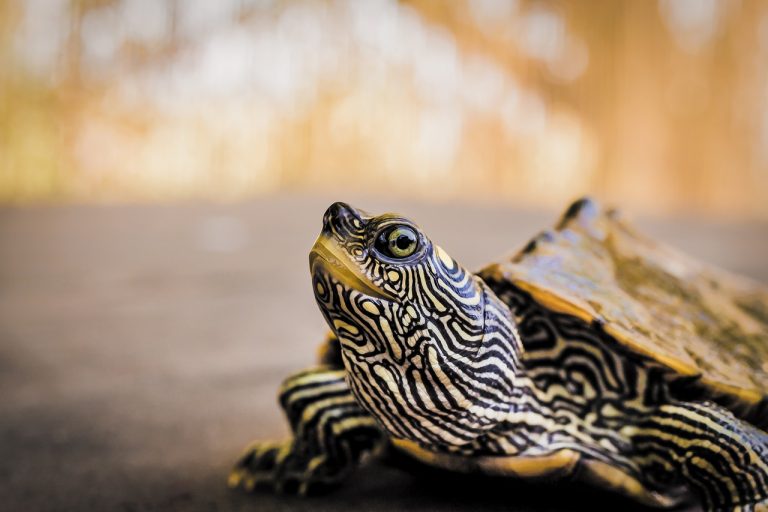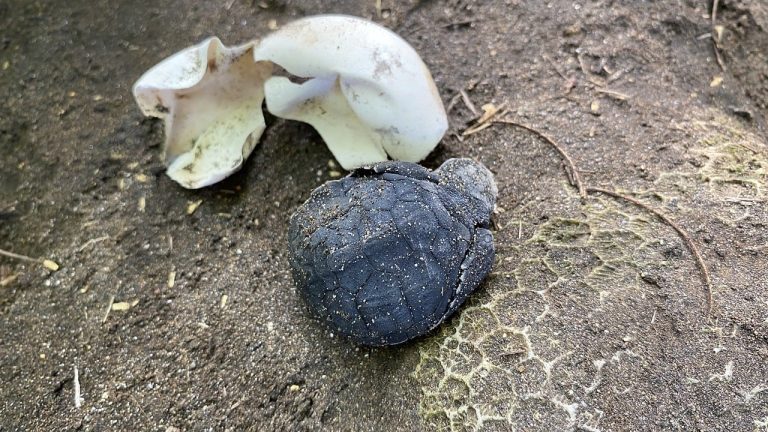These Are The Best Beginner Box Turtle Species
Owning a pet transcends mere interest; it’s akin to nurturing a true friendship & Box Turtle Species. Recently, the box turtle has gained popularity as an ideal companion. However, it’s important to note that there are various subspecies of box turtles, each with its own unique requirements. This begs the question: Is randomly selecting a box turtle at the onset of pet ownership the wisest choice?
In my opinion, starting with the common box turtle is a prudent decision. Renowned for its ease of care, the common box turtle serves as an excellent introduction to pet ownership. However, this assertion warrants further exploration.
Within the pages of this article, I aim to guide you in selecting the ideal box turtle species to kickstart your pet keeping journey. By providing a comparative analysis of various subspecies, I endeavor to simplify the decision-making process, ensuring that you embark on this adventure fully informed and equipped to provide the best possible care for your new reptilian friend.

Species Of Box Turtles
Common Box Turtle
We know common box turtle species has four different subspecies.
- Eastern box turtle
- Three-toed box turtle
- Florida box turtle
- Gulf Coast box turtle
Eastern Box Turtle
Eastern Box Turtle Profile:
- Size: Eastern box turtles typically measure between 4.5 to 6 inches in length, although individuals reaching up to 7 inches can also be found.
- Look: Their carapace is characterized by dark brown coloring, adorned with a variety of splotches ranging from yellow to red. The plastron, or underside, is typically tan or black and may be a solid color.
- Native Place: Eastern box turtles inhabit areas along the east coast of the United States, ranging from Maine to Georgia, and extending as far west as Michigan and Illinois. They are commonly found in humid wooded environments.
- Life Span: Eastern box turtles are known for their longevity, with lifespans ranging from 40 to 100 years.
- Diet: Their diet consists of a variety of foods including fungi, berries, seeds, snails, mealworms, and grubs. It’s essential to provide a balanced diet to ensure their health and well-being.
- Temperature: Maintaining an ideal temperature in the enclosure is crucial for the health of Eastern box turtles. Temperatures should range from 70 to 75 degrees Fahrenheit to mimic their natural habitat.
- Humidity: Eastern box turtles require a humidity level of around 60% in their enclosure to prevent dehydration and shell problems. Ensuring proper humidity is essential for their overall health and comfort.
By understanding and meeting these requirements, Eastern box turtles can thrive in captivity, providing their owners with companionship for many years to come.
The Eastern box turtle is not only a popular choice for beginners due to its ease of maintenance, but it’s also affordable to care for. With proper attention to their habitat, diet, and environmental needs, Eastern box turtles can thrive in captivity without requiring excessive expenses. Their availability in the pet trade also contributes to their affordability, making them accessible to novice reptile enthusiasts looking to embark on their pet-keeping journey without breaking the bank. Additionally, their docile temperament and adaptability make them an ideal companion for individuals new to reptile ownership. Overall, the Eastern box turtle offers a rewarding and budget-friendly pet-keeping experience for beginners.
Three-Toed Box Turtle
Three-Toed Box Turtle Profile:
- Size: The average size of a Three-Toed Box Turtle ranges from 4 to 6.5 inches in length.
- Look: Their dome-shaped shell is slightly higher but longer and narrower compared to the Eastern Box Turtle. They typically exhibit olive or yellowish-brown to brown coloring with spots or lines.
- Native Place: Three-Toed Box Turtles can be found throughout central and southern states, spanning from Arkansas to Kansas, and from western Georgia to northwest Texas. They prefer habitats with proper humidity levels, hiding places, and food sources.
- Lifespan: While Three-Toed Box Turtles have a shorter lifespan compared to some other subspecies, ranging from 20 to 30 years, with proper care they can live for 50 years or more.
- Diet: Their ideal diet consists of a balanced mix of 50% meat and 50% plant matter. Providing a varied diet is essential for their health and well-being.
- Temperature: Maintaining an ideal temperature in the enclosure is crucial, with temperatures ranging from 70 to 75 degrees Fahrenheit to mimic their natural habitat.
- Humidity: Three-Toed Box Turtles require a humidity level of around 60% in their enclosure to prevent dehydration and ensure proper shell health.
- Affordability: Three-Toed Box Turtles are known for being affordable pets, making them an excellent choice for beginners looking to start their pet-keeping journey without significant financial investment.
In summary, the Three-Toed Box Turtle offers an accessible and rewarding pet-keeping experience for beginners. With proper care and attention to their specific requirements, they can thrive in captivity and provide companionship for many years to come.
Florida Box Turtle
Florida Box Turtle Profile:
- Size: Florida Box Turtles typically measure between 4 to 6 inches in length on average.
- Look: They are characterized by a dark brown carapace adorned with a distinctive yellow starburst pattern, resembling an ornate box turtle.
- Native Place: As the name suggests, Florida Box Turtles are primarily found in Florida, with some populations extending into southern Georgia. They inhabit damp woods, swamps, and marshes, preferring environments with ample moisture.
- Lifespan: With proper care, Florida Box Turtles can live up to 50 years, making them long-term companions for dedicated pet owners.
- Diet: Their diet consists of a varied mix of food including crickets, flies, earthworms, fruits, berries, leaves, moss, and mushrooms. Providing a diverse diet is essential for their overall health and well-being.
- Temperature: Maintaining an ideal temperature in the enclosure is crucial for Florida Box Turtles, with temperatures ranging from 70 to 90 degrees Fahrenheit. They require a warm environment to thrive.
- Humidity: Florida Box Turtles require a humidity level of around 40% in their enclosure to ensure proper hydration and shell health. While they need moisture, excessive humidity can lead to respiratory issues, so maintaining the correct balance is essential.
Florida Box Turtles offer a unique and captivating option for pet enthusiasts, with their striking appearance and relatively manageable care requirements. By providing them with a suitable habitat and fulfilling their dietary and environmental needs, pet owners can enjoy the companionship of these fascinating reptiles for many years to come.
Gulf Coast Box Turtle
Gulf Coast Box Turtle Profile:
- Size: Gulf Coast Box Turtles typically range in size from 6.5 to 7 inches on average, with some individuals reaching up to 8.5 inches in length.
- Look: They are characterized by a round carapace and may have a solid-colored or spotted plastron.
- Native Places: Gulf Coast Box Turtles inhabit areas along the Gulf Coast, spanning from eastern Texas to western Florida. They are commonly found in swampy environments and exhibit an affinity for water.
- Lifespan: With proper care, Gulf Coast Box Turtles can live up to an impressive 100 years, making them one of the longest-lived turtle species.
- Diet: Their diet consists of a variety of foods including snails, worms, grubs, grasshoppers, fungus, fruits, leaves, and other plant matter. Providing a diverse diet is essential for their overall health and well-being.
- Temperature: Maintaining an ideal temperature in the enclosure is crucial for Gulf Coast Box Turtles, with temperatures around 75 degrees Fahrenheit being optimal for their well-being.
- Humidity: Gulf Coast Box Turtles require a humidity level of around 60% in their enclosure to ensure proper hydration and shell health. Providing access to water for soaking is also important, as they enjoy spending time in water.
Gulf Coast Box Turtles offer a captivating option for pet enthusiasts, with their impressive size and unique habitat preferences. By providing them with a suitable habitat and fulfilling their dietary and environmental needs, pet owners can enjoy the companionship of these remarkable reptiles for many decades to come.
Western Box Turtle
Western Box Turtle Subspecies:
- Ornate Box Turtle (Terrapene ornata):
- Size: Ornate Box Turtles typically measure between 4.5 to 5.5 inches in length.
- Look: They are characterized by a domed shell adorned with intricate patterns and vibrant colors, including yellow, orange, and red.
- Native Places: Ornate Box Turtles are native to the central United States, inhabiting regions from Texas to South Dakota and from New Mexico to Wisconsin.
- Habitat: They prefer dry grasslands, prairies, and open woodlands, often found in areas with sandy soils.
- Lifespan: With proper care, Ornate Box Turtles can live up to 40 years or more.
- Desert Box Turtle (Terrapene ornata luteola):
- Size: Desert Box Turtles typically range in size from 4.5 to 6 inches.
- Look: They have a lighter coloration compared to Ornate Box Turtles, often exhibiting shades of tan or yellow.
- Native Places: Desert Box Turtles are found in the southwestern United States, including regions of Arizona, New Mexico, and Texas.
- Habitat: They inhabit arid desert environments, including sandy deserts, scrublands, and rocky terrain.
- Lifespan: Similar to Ornate Box Turtles, Desert Box Turtles can live up to 40 years or more with proper care.
Both subspecies of Western Box Turtles offer unique characteristics and habitat preferences. While Ornate Box Turtles are known for their vibrant colors and intricate shell patterns, Desert Box Turtles exhibit adaptations suited to arid desert environments. By understanding and meeting their specific needs, pet owners can provide a suitable environment for these fascinating reptiles to thrive in captivity.
Ornate Box Turtle
Ornate Box Turtle Profile:
- Size: Ornate Box Turtles typically range in size from 5 to 7 inches on average.
- Look: They are characterized by a tall, domed carapace that is flat on the top and brown in color. The plastron often features distinctive yellow stripes.
- Native Places: Ornate Box Turtles are predominantly found in grasslands, deserts, and prairie remnants spanning from the eastern side of the Rocky Mountains eastward across the Great Plains states. They may also inhabit regions of Illinois, Indiana, and western Louisiana.
- Lifespan: Ornate Box Turtles have a lifespan ranging from 32 to 37 years with proper care and attention.
- Diet: Their diet consists of a variety of foods including mealworms, superworms, earthworms, silk worms, crickets, fruits, and vegetables. Providing a balanced diet is essential for their health and well-being.
- Temperature: Maintaining an ideal temperature in the enclosure is crucial for Ornate Box Turtles, with temperatures ranging from 70 to 90 degrees Fahrenheit. They require a warm environment to thrive.
- Humidity: Ornate Box Turtles require a humidity level of around 40% in their enclosure to ensure proper hydration and shell health.
While Ornate Box Turtles are affordable pets, it’s important to note that they have specific environmental requirements that can be challenging to replicate in a captive setting. Therefore, they may not be the most suitable option for beginner pet owners. However, with proper research, dedication, and experience, Ornate Box Turtles can make rewarding companions for experienced reptile enthusiasts.
Desert Box Turtle
Desert Box Turtle Profile:
- Size: Desert Box Turtles typically measure between 4 to 6 inches on average.
- Look: Desert Box Turtles exhibit two different color variations. One resembles the Ornate Box Turtle with yellow stripes, while the other lacks distinct patterns or lines, which is relatively uncommon.
- Native Places: These turtles are primarily found in select regions of Arizona, New Mexico, and western Texas in the United States. Some populations may also inhabit the Mexican states of Sonora and Chihuahua.
- Lifespan: Desert Box Turtles have a varied lifespan, ranging from 10 years to an impressive 50 years under proper care and conditions.
- Diet: Their diet primarily consists of worms, slugs, grasshoppers, and other insects found in their natural habitat. Providing a varied diet is essential for their health and well-being.
- Temperature: Maintaining an ideal temperature in the enclosure is crucial for Desert Box Turtles, with temperatures ranging from 70 to 90 degrees Fahrenheit. They require a warm environment to thrive.
- Humidity: Desert Box Turtles require a humidity level of around 60% in their enclosure to ensure proper hydration and overall health.
Desert Box Turtles offer a unique and captivating option for pet enthusiasts, with their diverse color variations and adaptation to arid desert environments. By providing them with a suitable habitat and fulfilling their dietary and environmental needs, pet owners can enjoy the companionship of these fascinating reptiles for many years to come.
Mexican Box Turtle
Mexican Box Turtle Profile:
- Size: Mexican Box Turtles typically range in size from 4 to 6 inches on average.
- Look: They are characterized by a brown, domed shell with distinct yellow markings on both the shell and skin.
- Native Places: Mexican Box Turtles are native to three states in Eastern Mexico: Veracruz, San Luis Potosi, and Tamaulipas. They thrive in environments with high temperatures and humidity levels.
- Lifespan: Mexican Box Turtles have an impressive lifespan, ranging from 50 to 90 years under optimal conditions.
Despite their unique characteristics and longevity, Mexican Box Turtles face significant challenges in captivity. Importing them is illegal, and attempts to keep them in non-native habitats, such as the forests of the USA, are not feasible and can contribute to their decline in the wild. Due to their endangered status and legal protections, Mexican Box Turtles cannot be kept as pets. It’s essential to respect these conservation measures and focus efforts on preserving their natural habitats to ensure the survival of this endangered subspecies.
Yucatan Box Turtle
Yucatan Box Turtle Profile:
- Size: Yucatan Box Turtles typically have an average size of 6 inches.
- Look: They are characterized by a brown coloration and an elongated dome-shaped shell.
- Native Places: Yucatan Box Turtles are exclusive to the Yucatan Peninsula in Mexico.
- Lifespan: Yucatan Box Turtles have an impressive lifespan, often reaching up to 100 years.
While Yucatan Box Turtles possess unique characteristics and longevity, they are not part of the pet trade. Due to their limited distribution and protected status, they are not considered suitable for pet keeping. It’s crucial to prioritize their conservation in their natural habitat rather than attempting to keep them as pets. Respecting their status as wild animals is essential for their survival and the preservation of their species.
Spotted Box Turtle
Spotted Box Turtle Profile:
- Size: Spotted Box Turtles typically have an average size ranging from 5.5 to 6 inches.
- Look: They are characterized by a long, oval-shaped carapace that is less domed compared to other subspecies. The shell is typically brown in color.
- Native Places: Spotted Box Turtles come in two basic types: the Southern Spotted Box Turtle and the Northern Spotted Box Turtle. Their native range depends on their subspecies. Southern Spotted Box Turtles inhabit the southern part of the range, including south Sinaloa, Nayarit, and Jalisco, while Northern Spotted Box Turtles reside in northern Sinaloa, Sonora, and Chihuahua. They are primarily found in northwestern Mexico, particularly in regions such as Sinaloa, Sonora, Nayarit, Jalisco, and Chihuahua.
- Lifespan: Spotted Box Turtles have an impressive lifespan, ranging from 100 to 150 years under optimal conditions.
Spotted Box Turtles exhibit unique characteristics and adaptations based on their subspecies and native habitats. Due to their longevity and specific environmental requirements, they are not commonly kept as pets. It’s essential to prioritize their conservation in the wild to ensure the preservation of their species for future generations.
Spotted Box Turtle Requirements:
- Diet: Spotted Box Turtles have a varied diet that includes earthworms, wax worms, mealworms, crickets, tadpoles, chicken, crab, turkey, bacon, beef, and vegetation such as romaine lettuce. Providing a diverse diet is essential for their health and nutrition.
- Temperature: The ideal temperature range in a Spotted Box Turtle’s enclosure should be maintained between 65 to 90 degrees Fahrenheit. This temperature range allows for thermoregulation, enabling the turtles to bask in warmer areas and retreat to cooler spots as needed.
- Humidity: Spotted Box Turtles require a humidity level of around 60% in their enclosure to ensure proper hydration and shell health. Maintaining adequate humidity is crucial for preventing dehydration and shell problems.
By fulfilling these dietary, temperature, and humidity requirements, pet owners can ensure the health and well-being of Spotted Box Turtles in captivity. Regular monitoring and adjustments to the enclosure’s conditions may be necessary to meet the turtles’ needs as they grow and develop.
Asian Box Turtles
Asian Box Turtle Profile:
- Subspecies: Asian Box Turtles encompass a diverse group of subspecies found across various regions, including Bangladesh, the Nicobar Islands, Myanmar, Assam, southern Vietnam, Sumatra, Java, Borneo, Sulawesi, and the Philippines. These turtles thrive in tropical to subtropical climates.
- Appearance: Asian Box Turtles are characterized by a highly domed shell with a smooth carapace, typically dark in color.
- Suitability for Pet Keeping: Asian Box Turtles are well-suited for pet keeping in regions with climates similar to their natural habitat. Some common subspecies suitable for pet ownership include the Malayan Box Turtle, Chinese Box Turtle, Malaysian Box Turtle, CBB Asian Box Turtle, and Indonesian Box Turtle, among others.
- Requirements:
- Diet: Asian Box Turtles have a varied diet consisting of romaine lettuce, mealworms, wax worms, night crawlers, small mice, turtle pellets, and commercial turtle foods. They also enjoy fruits such as bananas, watermelon, tomatoes, blueberries, and strawberries.
- Temperature: The ideal temperature range in an Asian Box Turtle’s enclosure should be maintained between 70 to 90 degrees Fahrenheit to mimic their natural tropical or subtropical environment.
- Humidity: It is essential to maintain a humidity level of around 60% in an Asian Box Turtle’s enclosure to ensure proper hydration and overall health.
For beginners, subspecies such as the Chinese Box Turtle, Malaysian Box Turtle, or Indonesian Box Turtle are recommended due to their relative ease of care and suitability for pet keeping. These turtles offer a rewarding experience for novice reptile enthusiasts while providing companionship and enjoyment for years to come.
What Are The Best Beginner Box Turtle Species?
Certainly! Here’s a summarized list of box turtle species that are considered suitable for beginners based on their ease of care and availability:
Eastern Box Turtle
- Average Size: 4.5 to 6 inches
- Native Range: Eastern United States
- Lifespan: Up to 100 years
- Requirements: Moderate care needs, suitable for beginners
Three-Toed Box Turtle
- Average Size: 4 to 6.5 inches
- Native Range: Central and Southern United States
- Lifespan: Up to 50 years
- Requirements: Moderate care needs, suitable for beginners
Florida Box Turtle
- Average Size: 4 to 6 inches
- Native Range: Florida and Southern Georgia
- Lifespan: Up to 50 years
- Requirements: Moderate care needs, suitable for beginners
Indonesian Box Turtle
- Average Size: Varies by subspecies
- Native Range: Indonesia
- Lifespan: Varies by subspecies
- Requirements: Moderate care needs, suitable for beginners
Malaysian Box Turtle
- Average Size: Varies by subspecies
- Native Range: Malaysia
- Lifespan: Varies by subspecies
- Requirements: Moderate care needs, suitable for beginners
Chinese Box Turtle
- Average Size: Varies by subspecies
- Native Range: China
- Lifespan: Varies by subspecies
- Requirements: Moderate care needs, suitable for beginners
These box turtle species are commonly available in the pet trade and are known for their adaptability to captive environments. With proper care and attention to their specific requirements, they can make excellent pets for beginners interested in keeping box turtles.
How To Choose Your Best Beginner Box Turtle?
Choosing the right box turtle requires careful consideration of various factors to ensure the best match for your preferences and lifestyle. Here are some essential questions to ask before buying a box turtle:
- Indoor vs. Outdoor Enclosure: Determine whether you prefer an indoor or outdoor enclosure for your box turtle. While most subspecies can adapt to both environments, some may have preferences or specific requirements.
- Aquatic vs. Land Dweller: Decide whether you want an aquatic box turtle or a terrestrial (land-dwelling) species. While most box turtles are land dwellers, there are some aquatic species to consider.
- Exotic vs. Native: Consider whether you prefer a native box turtle species or an exotic one. Native species are generally easier to care for and may be more suitable for beginners, while exotic species may be rare, endangered, or require specialized care.
- Temperature Adaptation: Determine if you prefer a box turtle species adapted to specific temperature ranges or if you’re open to species that can withstand a wide range of temperatures.
- Basking vs. Bottom Walker: Decide if you prefer a box turtle species that enjoys basking in the sun or one that tends to spend more time on the ground (bottom walker).
- Common vs. Rare: Consider whether you prefer a common box turtle species or a rarer, less commonly available species. Keep in mind that rare species may come with higher costs and require more specialized care.
- Dietary Preferences: Determine whether you prefer a carnivorous, omnivorous, or herbivorous box turtle species. While most box turtles are omnivorous, their dietary preferences may vary based on species and life stage.
- Size Preference: Consider what size of box turtle you prefer, keeping in mind that most box turtles have an average size of 6 to 8 inches but can vary in size depending on the species.
- Sex Preference: Decide whether you prefer a male or female box turtle. Keep in mind that there may be differences in behavior and characteristics between males and females.
By asking yourself these questions and considering your preferences, you can make a more informed decision when selecting the best box turtle species for you as a beginner pet owner. Remember to research the specific care requirements of your chosen species to ensure you can provide a suitable habitat and environment for your new pet.
Indoor Enclosure Or Outdoor Enclosure
Your consideration of the habitat preference of box turtle species, such as the desert box turtle, is essential for providing appropriate care. Indeed, some species may thrive best in outdoor enclosures due to their natural habitat requirements, while others may adapt well to indoor environments.
For beginners, indoor box turtles may indeed be a more practical choice, as they offer greater control over environmental factors such as temperature, humidity, and lighting. Indoor enclosures also provide easier access for observation and care, making it simpler for novice pet owners to monitor their turtle’s well-being.
It’s important to match your chosen box turtle species with your ability to provide suitable housing and care. For those without the means or desire to construct an outdoor enclosure, selecting an indoor-friendly species is a wise decision. By prioritizing the comfort and well-being of your pet, you can ensure a fulfilling and rewarding experience as a box turtle owner.
Land Dweller Box Turtle Or Aquatic Box Turtle
Creating a suitable environment within the enclosure is crucial for the health and well-being of box turtles, especially land-dwelling species. Here are some key considerations to ensure the ideal habitat for your box turtle:
- Substrate: Choose a substrate that mimics the natural environment of lowlands with small plants. Ideal substrates for box turtles include spongy, loose materials such as coconut coir, peat moss, or a mixture of soil and sand. These substrates can retain moisture, which helps maintain humidity levels and provides a comfortable surface for digging and burrowing.
- Humidity: Maintain a high humidity level within the enclosure to replicate the moist conditions preferred by box turtles. This can be achieved by misting the enclosure regularly, providing a shallow water dish for soaking, and using a substrate that retains moisture. Aim for humidity levels of around 60% to 80% for most box turtle species.
- Enclosure Design: Design the enclosure to include hiding spots, plants, and other features that mimic the natural habitat of box turtles. Incorporate live plants or artificial foliage to provide cover and create a sense of security for your turtle.
- Temperature Regulation: Ensure that the enclosure provides a temperature gradient, with warmer basking spots and cooler areas for your box turtle to regulate its body temperature. Use heat lamps, ceramic heat emitters, or under-tank heaters to create basking spots with temperatures ranging from 80 to 90 degrees Fahrenheit.
- Aquatic Box Turtle Setup: If you’re keeping an aquatic box turtle, provide a large water area within the enclosure, such as a fish tank or pond setup. Include floating platforms or basking spots where the turtle can climb out of the water to dry off and bask under a heat lamp.
By creating a habitat that meets the specific needs of your box turtle species, you can ensure a comfortable and enriching environment for your pet to thrive in captivity. Regular monitoring of environmental conditions and adjustments to the enclosure setup as needed will help maintain optimal conditions for your box turtle’s health and well-being.
Exotic Box Turtle Or Native Box Turtle
| Exotic Box Turtles | Native Box Turtles | |
|---|---|---|
| Cost | Expensive | Not expensive |
| Availability | Rare | Available everywhere |
| Conservation Status | Endangered species | Safe |
| Ease of Maintenance | Challenging to raise and | Easy to maintain and handle |
| maintain |
This comparison table highlights the differences between exotic and native box turtles in terms of cost, availability, conservation status, and ease of maintenance.
Temperature Adapted Turtle Or Tropical Box Turtle
Absolutely, maintaining the right temperature within the box turtle’s enclosure is crucial for their health and well-being. As ectotherms, box turtles rely on external sources to regulate their body temperature. Failure to provide the appropriate temperature range can lead to stress, illness, or even death.
Additionally, it’s essential to recognize that box turtles have specific temperature requirements for different activities and life stages. For example, they require warmer temperatures for digestion and activity and cooler temperatures for rest and hibernation/aestivation periods.
For prospective box turtle owners, being prepared to meet these temperature requirements, including providing heating and cooling options as needed, is essential. Additionally, understanding and accommodating their natural behaviors, such as hibernation and aestivation, are critical aspects of responsible box turtle care.
Ultimately, ensuring that you can meet the specific temperature needs of box turtles is crucial before considering them as pets. If you’re unable or unwilling to provide the necessary temperature regulation and care, then box turtles may not be the best pet option for you.
Basking Box Turtle Or A Bottom Walker Box Turtle
Indeed, basking is a crucial behavior for most box turtle species, as it helps them regulate their body temperature and aids in digestion and overall well-being. While box turtles are not typically known for swimming, they may occasionally soak in water to hydrate and maintain skin health.
Aquatic box turtles, as bottom walkers, may exhibit less basking behavior compared to terrestrial species. Instead, they may spend more time exploring the bottom of their aquatic environment, foraging for food, and resting in submerged areas.
Regardless of species, providing a basking area with access to both warmth and UVB light is essential for the health of all box turtles. This allows them to thermoregulate effectively and absorb vital UV radiation for calcium metabolism and shell health.
Understanding the natural behaviors and habitat preferences of box turtles is crucial for creating a suitable captive environment that meets their needs and promotes their overall health and well-being.
Common Box Turtle Or Rare Box Turtle
Absolutely, your advice regarding the suitability of common box turtles for beginners is well-founded. Common box turtles, being native to the area, are more accustomed to the environmental conditions and therefore find it easier to adapt to captive environments. Additionally, their availability and affordability make them an attractive option for novice turtle enthusiasts.
On the other hand, rare box turtles present several challenges for beginner pet owners. Their scarcity and high cost make them inaccessible to many, and their reluctance to thrive in captive settings further complicates their care requirements. Moreover, as endangered species, it is essential to prioritize their conservation in the wild rather than contributing to the pet trade demand.
Therefore, for those new to box turtle ownership, opting for common box turtles is a prudent choice. Not only are they easier to acquire and care for, but they also offer an enriching experience for beginner pet owners without imposing undue strain on conservation efforts.
Size Of A Box Turtle
Absolutely, considering the size of the enclosure and available space is essential when choosing a box turtle species. Opting for a smaller species ensures that the turtle has enough room to move around comfortably and that the enclosure can accommodate its needs adequately.
Based on the size chart provided, here are some smaller box turtle species that may be suitable for smaller enclosures or limited space:
- Eastern Box Turtle: 4.5 – 6 inches
- Florida Box Turtle: 4 – 6 inches
- Mexican Box Turtle: 4 – 6 inches
- Terrapene Carolina Putnami: 4 – 6 inches
- Three-Toed Box Turtle: 4 – 6.5 inches
- Desert Box Turtle: 4 – 6 inches
- Spotted Box Turtle: 4 – 6 inches
These species have relatively smaller average sizes compared to others listed and can thrive in appropriately sized enclosures without the need for excessive space. By selecting a smaller box turtle species, you can ensure that both you and your pet have a comfortable living environment conducive to a fulfilling and enriching relationship.
Carnivorous Box Turtle Vs Omnivorous Box Turtle Vs Herbivorous Box Turtle
Understanding the dietary needs of box turtles at different stages of life is crucial for providing optimal nutrition and promoting overall health and well-being. Here’s a breakdown of their dietary preferences:
- Baby Box Turtles (Carnivorous): Baby box turtles have a higher protein requirement to support rapid growth and development. Their diet primarily consists of animal-based foods such as insects, worms, snails, and small fish. These protein-rich foods provide essential nutrients for bone and shell formation during the early stages of life.
- Adult Box Turtles (Herbivorous): As box turtles mature, their dietary preferences shift towards plant-based foods. Adult box turtles consume a variety of fruits, vegetables, leafy greens, and vegetation. These foods provide essential vitamins, minerals, and fiber necessary for maintaining overall health and vitality.
It’s essential to provide a balanced diet for box turtles at every stage of their life to ensure proper growth, development, and longevity. Offering a diverse range of foods that cater to their omnivorous nature is key to meeting their nutritional needs.
For a comprehensive guide on box turtle diet and nutrition. This resource will provide valuable information on suitable foods, feeding frequency, and dietary supplements to help you provide the best care for your box turtle companion.
Sex Of The Box Turtle
Determining the sex of a box turtle can be challenging, but certain physical characteristics can provide clues:
- Size: In some species, males tend to be larger than females, with longer and thicker tails. However, this is not a reliable indicator for all box turtle species.
- Tail Length and Thickness: Male box turtles typically have longer and thicker tails compared to females. The male’s tail extends beyond the edge of the shell, while the female’s tail is shorter and may barely reach or not extend past the shell’s edge.
- Cloacal Opening: The cloacal opening, located at the base of the tail, tends to be larger and more pronounced in males. In contrast, the female’s cloacal opening is smaller and more inconspicuous.
- Plastron Shape: The plastron (underside of the shell) of male box turtles is typically concave or slightly indented, while the female’s plastron is flat or slightly convex. This concave shape allows for easier mounting during mating.
- Claw Length and Shape: Males may have longer and thicker claws on their front legs, which they use during courtship displays and aggression. Females generally have shorter and finer claws.
- Behavior: Males may exhibit more aggressive behavior, particularly during the breeding season, when they compete for mates. They may also engage in courtship displays, including head bobbing and chin rubbing.
While these characteristics can provide some guidance in determining the sex of a box turtle, they may not be definitive for all individuals or species. For accurate sex determination, it is advisable to consult with a veterinarian or experienced reptile expert who can perform a thorough examination of the turtle’s anatomy. Additionally, DNA testing can provide conclusive results in cases where visual identification is inconclusive.
Does The Budget Matter?
In the preceding section, I neglected to address an important factor: budget considerations. While some may overlook its significance, for many beginners, it holds considerable weight.
When selecting a box turtle, it’s wise to choose one that fits within your financial means. Many species, like the McCord box turtle, are rare and require high maintenance, which can be financially demanding.
Avoid the temptation to purchase a box turtle solely based on its appeal. Instead, as a beginner, opt for a more affordable species that you can comfortably care for.
To facilitate your decision-making process, I’ve compiled an average price list of various box turtle subspecies:
Subspecies of Box Turtle Cost Range
Eastern Box Turtle $140-$360
Florida Box Turtle $300-$600
Three-Toed Box Turtle $140-$430
Aquatic Box Turtle $30-$100
Desert Box Turtle $300-$400
Ornate Box Turtle $200-$350
Chinese Box Turtle $300-$380
McCord Box Turtle $7540-$8000
Indonesian Box Turtle $50-$120
Asian Box Turtle $90-$130
Keep in mind that these prices are approximate and can vary based on several factors.
Last Words
It’s important to note that while the Florida box turtle may be a great option for beginners, geographical location also plays a significant role in choosing the right box turtle species. For instance, if you reside in an Asian country, opting for an Asian box turtle would be more suitable and beneficial for you.
Throughout this article, I’ve endeavored to present information in a clear and accessible manner to assist you in making informed decisions about selecting the ideal box turtle species for your circumstances. I hope you’ve found this guide helpful and informative.





